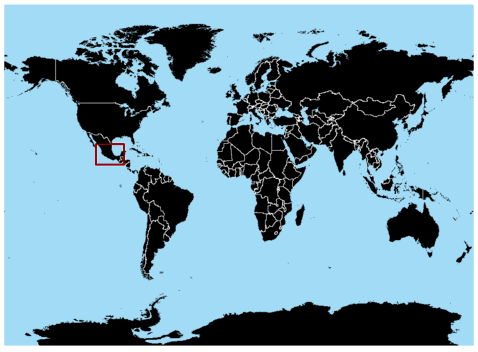They have a face only a mother could love, they’re considered a delicacy when roasted, they can regenerate parts of their brains, and their common name is “water monster.” They’re also becoming extinct.
“The axolotl, also known as a Mexican salamander (Ambystoma mexicanum) or a Mexican walking fish, is a neotenic salamander, closely related to the tiger salamander. Although the axolotl is colloquially known as a “walking fish,” it is not a fish, but an amphibian. The species originates from numerous lakes, such as Lake Xochimilco underlying Mexico City. Axolotls are unusual among amphibians in that they reach adulthood without undergoing metamorphosis. Instead of developing lungs and taking to land, the adults remain aquatic and gilled” (Wikipedia: Axolotl).
“The word ‘axolotl’ comes from the native Aztec language, or nahuatl. It roughly translates to: water slave, water servant, water sprite, water player, water monstrosity, water twin, or water dog. All of these names refer to the Aztec god Xolotl, brother to Quetzacoatl and patron of the dead and resurrected (where he took the form of a dog), games, grotesque (read: ugly) beings, and twins. Aztec lore states that Xolotl transformed himself into, among other things, an axolotl to escape banishment. He was captured, killed, and used to feed the sun and moon” (source).
The Aztecs ate them, and roasted axolotl is still considered a delicacy in Mexico today, but that’s not why they’re going extinct in the wild. “The axolotl is only native to Lake Xochimilco and Lake Chalco in central Mexico. Unfortunately for the axolotl, Lake Chalco no longer exists, as it was artificially drained to avoid periodic flooding, and Lake Xochimilco remains a remnant of its former self, existing mainly as canals. The wild population has been put under heavy pressure by the growth of Mexico City. The axolotl is currently on the International Union for Conservation of Nature’s annual Red List of threatened species. Non-native fish, such as African tilapia and Asian carp, have also recently been introduced to the waters. These new fish have been eating the axolotls’ young, as well as its primary source of food” (Wikipedia, Ibid.).
“So what?,” you say. Well, apart from being another sad example of human-induced extinction of wild species, axolotls are important in research as a “model organism,” and large numbers of them are bred in captivity for studies of the regulation of gene expression, embryology, neurobiology, and regeneration:
“The feature of the salamander that attracts most attention is its healing ability: the axolotl does not heal by scarring and is capable of the regeneration of entire lost appendages in a period of months, and, in certain cases, more vital structures. Some have, indeed, been found restoring the less vital parts of their brains. They can also readily accept transplants from other individuals, including eyes and parts of the brain—restoring these alien organs to full functionality. In some cases, axolotls have been known to repair a damaged limb, as well as regenerating an additional one, ending up with an extra appendage that makes them attractive to pet owners as a novelty. In metamorphosed individuals, however, the ability to regenerate is greatly diminished. The axolotl is therefore used as a model for the development of limbs in vertebrates” (Ibid.).
Editor’s note: for more on the subject, see Myers, P., R. Espinosa, C. S. Parr, T. Jones, G. S. Hammond, and T. A. Dewey. 2014. The Animal Diversity Web (online). Accessed at http://animaldiversity.org. If you dare to violate all sensibilities and want to whip up an axolotl cake, click here for the recipe.
Article by Bill Norrington






